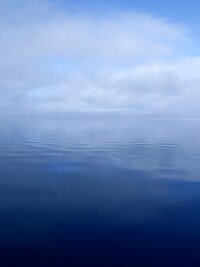
Photo from wikipedia
We discuss the analysis impact of the ensemble‐based assimilation of differential absorption lidar observed water vapour and Raman lidar observed temperature profiles into the Weather Research and Forecasting model at… Click to show full abstract
We discuss the analysis impact of the ensemble‐based assimilation of differential absorption lidar observed water vapour and Raman lidar observed temperature profiles into the Weather Research and Forecasting model at convection‐permitting scale. The impact of flow‐dependent background error covariance in the data assimilation (DA) system that uses the hybrid three‐dimensional variational (3DVAR) ensemble transform Kalman filter (ETKF) was compared to 3DVAR DA. The 3DVAR‐ETKF experiment resulted in a 50% lower temperature and water vapour RMSE than the 3DVAR experiment when taking the assimilated lidar data as reference and 26% (38%) lower water vapour (temperature) RMSE when comparing against independent radiosonde observations collocated with the lidar site. The planetary boundary‐layer height of the analyses compared to independent ceilometer data provided additional evidence of improvement. The 3DVAR analysis RMSE showed 140 m, whereas 3DVAR‐ETKF showed 60 m. Although limited to a single case study, we attribute these improvements to the flow‐dependent background error covariance matrix in the 3DVAR‐ETKF approach. The vertical profile measured from a single stationary lidar system established a spatial impact with a 100 km radius. This seems to indicate future assimilation of water vapour and temperature data from an operational lidar network. The assimilation impact persisted 7 hr into the forecast time compared with the ceilometer data and 4 hr with GPS observations.
Journal Title: Quarterly Journal of the Royal Meteorological Society
Year Published: 2021
Link to full text (if available)
Share on Social Media: Sign Up to like & get
recommendations!